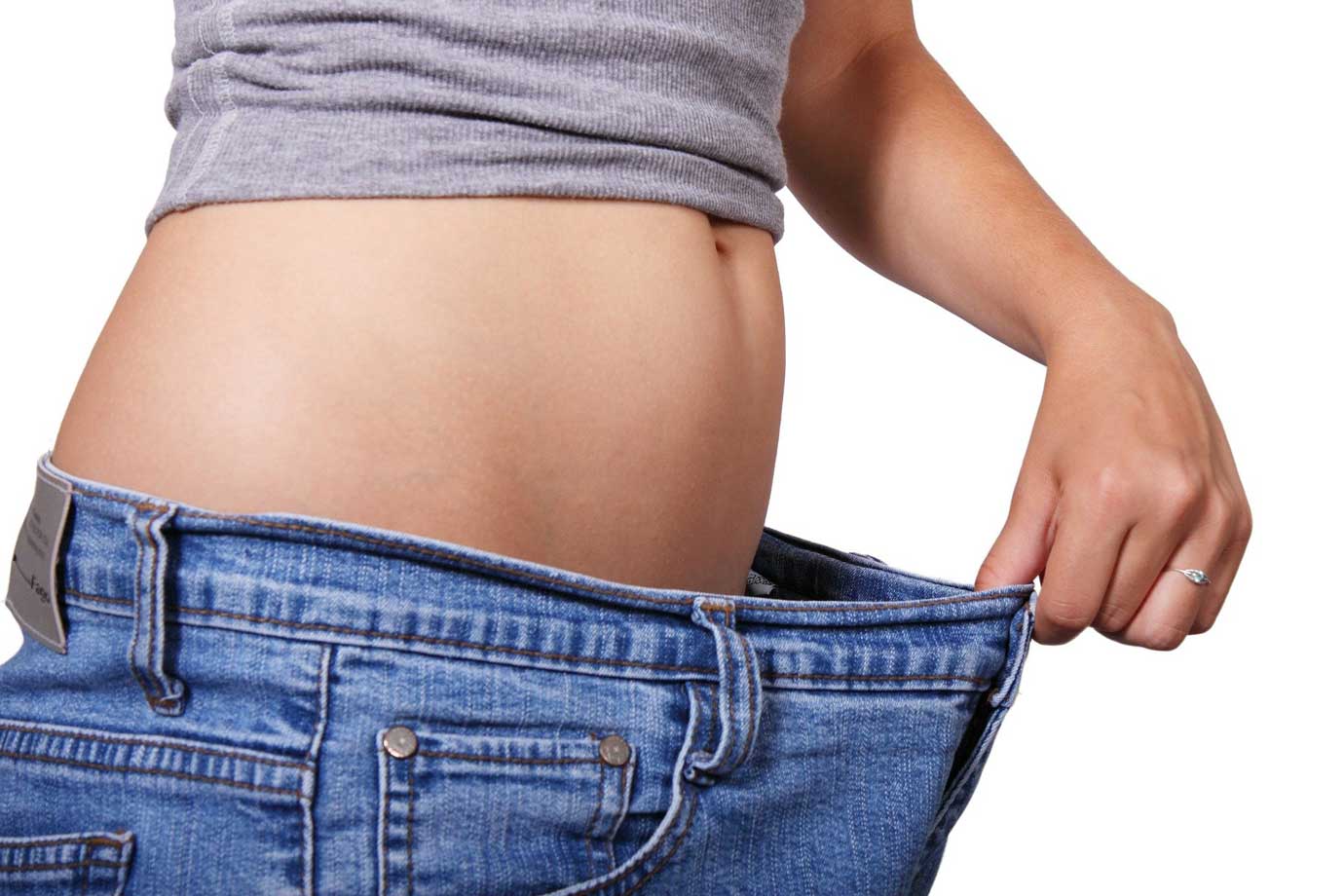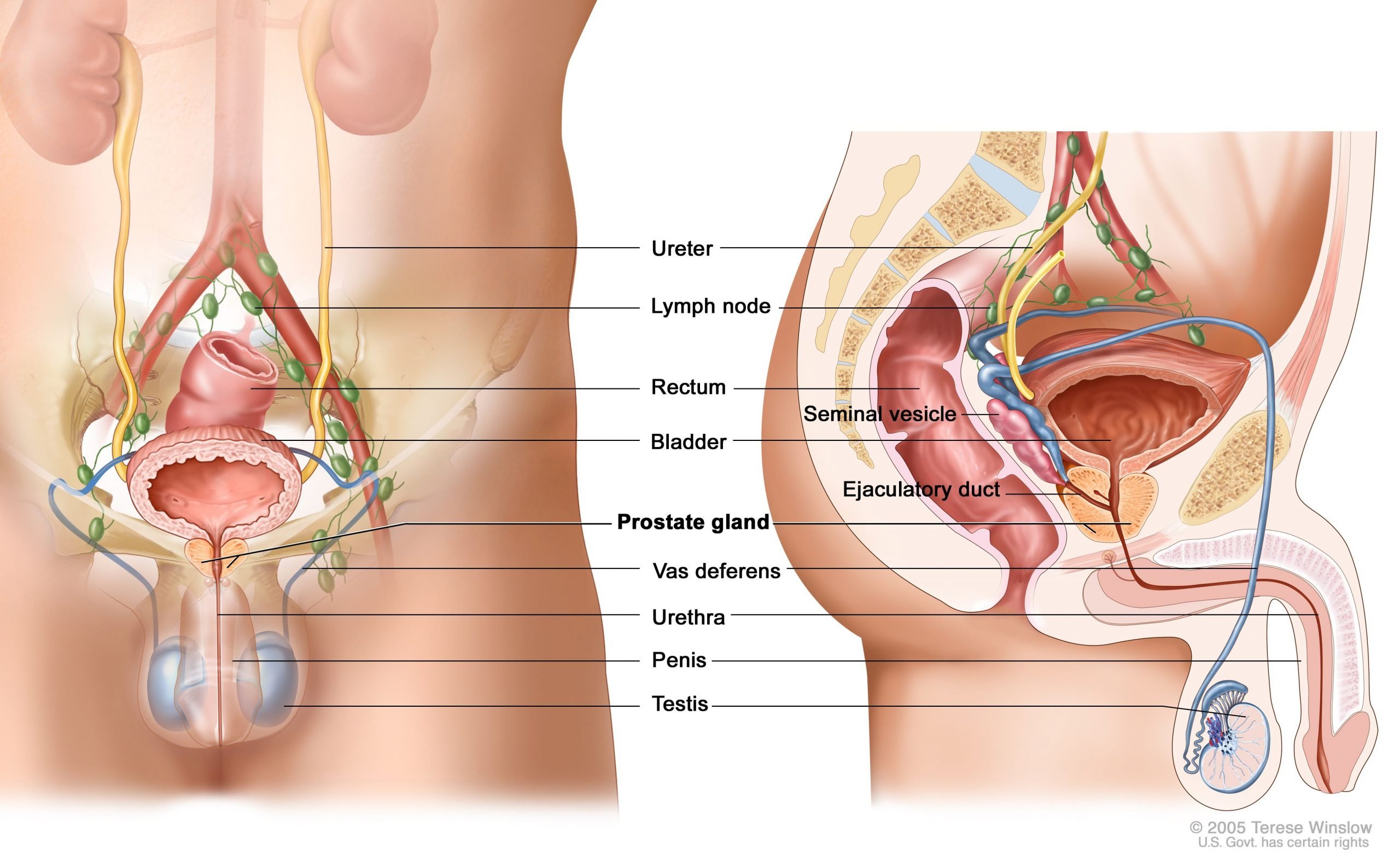Causes of pancreatitis and its home treatment
Acute pancreatitis is associated with excessive alcohol and gallstones consumption, and other causes include infection, physical injury, or abdominal surgery.
Pancreas or inflammation of the pancreas
Pancreatitis is an inflammation of the pancreas. This is due to the disruption of the flow of digestive enzymes and the attack of these enzymes on the pancreas, and as a result, the person will feel pain and discomfort in the abdomen.
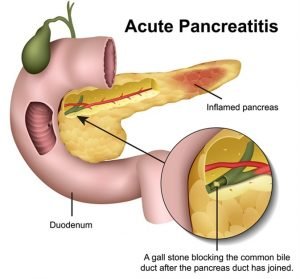
Prolonged pancreatitis can impair pancreatic function and reduce its ability to produce average amounts of digestive enzymes and hormones. This eventually leads to nutrient malabsorption and diseases such as diabetes. Statistics show that about 275 thousand people are infected with this disease every year.
What is pancreatitis?
The pancreas is a smooth, deep gland in the abdomen. This organ is a vital organ, and its task is to produce various enzymes and hormones involved in the gastrointestinal tract’s functioning. Digestive enzymes are transported into the duodenum, where proteins and fats are targeted for absorption.
Specialized cells in the pancreas secrete opposing hormones, insulin, and glucagon, into the bloodstream to regulate blood sugar levels. When blood sugar levels are high, insulin absorbs excess glucose from the bloodstream. Glucagon, on the other hand, releases stored glucose as needed by the body.
Types of pancreatitis
Acute pancreatitis is a condition in which the inflammation persists for a short time (most acute cases of the disease improve within a week, and the patient can return home after 5 to 10 days of hospitalization), while the chronic type The disease is characterized years after the onset of inflammation.
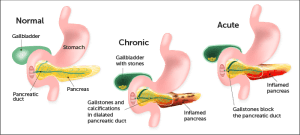
Acute pancreatitis
Acute pancreatitis is a sudden inflammation of the pancreas that is accompanied by mild to moderate discomfort. With proper treatment, most patients can recover completely, but acute pancreatitis can lead to infection, bleeding glands, cyst formation, and severe tissue damage in severe cases. This condition is associated with damage to other vital organs, including the lungs, kidneys, and heart.
Causes of acute pancreatitis
- Gallstones: The most common cause of acute pancreatitis is gallstones. Gallstones can block the pathways of digestive enzymes and hormones, and this blockage can lead to inflammation of the pancreas.
- Elevated triglyceride levels: Elevated triglyceride levels can cause free radical damage to pancreatic cells.
- Alcohol consumption: Alcohol consumption is a potential threat to the pancreas.
- Autoimmune pancreatitis: A rare type of pancreatitis caused by an attack by the pancreas’ immune system
- Injury: Direct injury to the abdomen can cause inflammation in the pancreas.
- Cystic fibrosis: Cystic fibrosis is a chronic genetic disease caused by abnormally thick, sticky mucus that travels through the lungs and gastrointestinal tract.
- Some estrogen-containing drugs: Corticosteroids and certain antibiotics play an important role in stimulating the pancreas, both as a direct toxic effect and as a side effect.
- Viral infection: Mumps is a rare and possible cause of pancreatitis in adulthood.
Symptoms of acute pancreatitis
- nausea
- Vomit
- Swelling of the abdomen, which becomes more severe after eating.
- Pain in the upper abdomen
- Fever
- Fast pulse
- Pancreatitis
Chronic pancreatitis
Chronic pancreatitis is associated with high-frequency pancreatitis and mild to moderate or severe abdominal pain. Chronic pancreatitis disrupts a person’s digestive system and affects the absorption of nutrients in the small intestine. If you follow a healthy diet, people will often lose weight due to the digestive system’s inability to absorb nutrients.
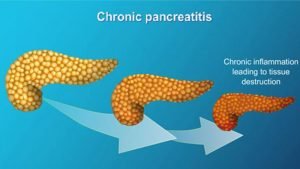
Recurrent acute pancreatitis can lead to chronic pancreatitis, and chronic pancreatitis can lead to ulceration of the pancreas and impaired function.
Symptoms of chronic pancreatitis
- Frequent and persistent abdominal pain that may be severe
- Weight loss due to lack of absorption of nutrients needed by the body
- Fatty stools, bad breath
- Diabetes, due to impaired function of insulin-producing cells in the pancreas
Causes of chronic pancreatitis
- In most cases, alcohol consumption is the leading cause of chronic pancreatitis.
- Hypertriglyceridemia: Increased triglyceride levels
- Narrow pancreatic duct: Obstruction of the pancreatic duct by gallstones or pancreas prevents the passage of digestive enzymes or hormones.
- Cystic fibrosis interferes with the abnormal production of thick and sticky mucus in the smooth passage of fluids in the lungs and gastrointestinal tract.
- Hereditary factors: Family history of familial pancreatitis
- Hypercalcemia can damage the pancreas through the accumulation of secretory proteins.
- Pancreatitis is associated with several autoimmune diseases, including inflammatory bowel disease, rheumatoid arthritis, primary biliary cirrhosis, Sjogren’s syndrome, retroperitoneal fibrosis, sarcoidosis, and sclerosing cholangitis.
- Recurrent acute pancreatitis can lead to chronic pancreatitis.
In which part of the body is the pain of pancreatitis felt?
- Both acute and chronic pancreatitis is characterized by pain in the upper abdomen, usually below the ribs.
- Left upper abdominal pain is a common symptom regardless of the diagnostic shape of the pancreas. The pain will last from a few minutes to a few hours.
- Mild pain that gets worse after eating or drinking.
- Pain that may be exacerbated when lying on your back may decrease when bending to a standing position.
- Persistent and severe pain that lasts for several days
- Pain that is transmitted to the lumbar region.
The severity of the pain is associated with the cause. Sudden back pain is a sign of gallstone pancreatitis, while partial local pain is caused by alcohol.
Diagnosis of pancreatitis
A combination of blood tests and imaging tests will be prescribed. A physical examination and medical history are needed to assess possible causes.
The diagnostic criteria for pancreatitis are as follows:
- The patient will have severe epigastric pain or pain in the upper left quadrant that will worsen after eating or drinking fatty foods.
- Lipase or amylase levels are three times higher than usual, a definitive diagnosis for the pancreas.
- Doses greater than four times the ratio of lipase to amylase will be due to alcohol consumption.
In addition to blood tests, health care professionals may order one or more of the following imaging tests to diagnose the disease:
- Abdominal ultrasound
- Endoscopic ultrasound
- Computed tomography scan or CT scan
- Endoscopy (ERCP), using an endoscope to help with bile duct bile ducts and cholangiopancreatography
- Magnetic resonance
Pancreatic function test, a test performed in some centers; in this test, the secretory hormone’s response (secreted by the small intestine) against a person’s pancreas is measured.
- Digestive enzymes (amylase and lipase) are almost three times normal.
- High blood sugar levels
- High levels of blood lipids
Treatment of pancreatitis
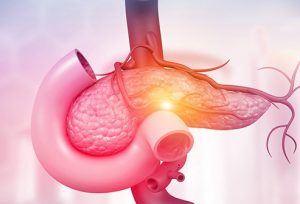
Depending on the type of pancreatitis, your doctor may refer you to a gastroenterologist or surgeon for the following steps and procedures:
- the person may be hospitalized and treated.
- It is essential to see a surgeon if the pancreas’ leading cause is gallstones or obstruction of the pancreas’ bile ducts.
- Medications and antibiotics are given orally or intravenously.
- Follow a low-fat, high-fluid diet at a higher number of meals and a smaller volume.
- If your doctor determines that a specific drug causes the disease, it will probably be replaced with a less dangerous alternative drug.
- Alternative therapies such as yoga, exercise, and acupuncture will be suggested to relieve pain.
Dietary considerations for patients with pancreatitis
Treatment of the pancreas may require the patient to fast and use intravenous nutrition. After controlling the inflammation, a low-fat diet and plenty of fluids will be prescribed to speed recovery.
Home remedies for relieving pancreatitis pain
Pancreatitis requires immediate medical attention. Treatment usually consists of intravenous fluids, antibiotics, and painkillers, but you can still use some home remedies to relieve the pain.

- Hot water bag
Using a hot water bottle is a quick and effective remedy for relieving upper abdominal pain caused by pancreatitis. Using a hot water bag will also help reduce inflammation in this area.
Just place the hot water bag on the painful area for 5 to 10 minutes. Being in the shower will also help relieve this pain.
Tip: Be careful when using a hot water bag so that your skin does not get burned.
- Apple cider vinegar
Apple cider vinegar has anti-inflammatory properties and helps reduce abdominal pain caused by pancreatitis. It will also help reduce gallbladder acid concentration.
Mix 1 tablespoon of apple cider vinegar in 1 cup of warm water and add some honey or lemon juice to it, and drink this solution twice a day.
- Omega 3 fatty acids
These acids, which are essential for the human body, have anti-inflammatory properties and help reduce the pain and inflammation caused by this disease. Studies show that eating foods rich in omega-3 fatty acids can help cure the disease. Foods such as soy, flaxseed, walnuts, canola, spinach, shrimp, and salmon are high in omega-3 fatty acids.
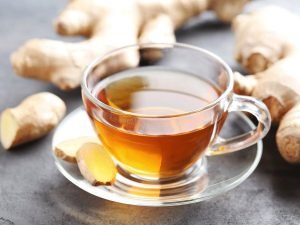
- Ginger tea
Ginger helps reduce inflammation in pancreatitis due to its anti-inflammatory and antioxidant properties. It is enough to wash and peel some ginger and then pour it into 1 cup of hot water, and after 10 minutes, pass the water through a strainer and drink it. (Benefits Of Ginger And Side Effects Of Using Ginger Tea)

- Acupuncture
Acupuncture is a safe and effective way to relieve discomfort and pain and has been used for thousands of years to treat many physical and mental illnesses. Experiments have shown that this method has played an essential role in reducing pain and inflammation caused by pancreatitis.
- Turmeric
Turmeric has anti-inflammatory properties and helps treat diseases such as pancreatitis and cancer. Studies show that it reduces the pain of pancreatic tissue and other organs by inhibiting tissue inflammation.
Boil 1 tablespoon of turmeric powder in 1 glass of milk or two glasses of water. Drink this liquid twice a day.
Tip: If you are pregnant or have diseases such as diabetes, bleeding disorders, gallstones, etc., be careful in consuming turmeric.

- Cornelian cherry
It also has anti-inflammatory properties and helps reduce the pain of pancreatitis. It also reduces vascular damage to the pancreas caused by diabetes.
Blueberries are rich in antioxidants and protect the pancreas from free radical damage. It also helps inhibit cancerous tumors’ growth, so it is best to eat about 1 cup of blueberries a day.
- Mushrooms
Fungi also have anti-inflammatory properties and protect the pancreas against pancreatitis. It also contains phytochemicals that prevent free radical damage to the body and reduce the risk of various cancers. Therefore, to treat and relieve this disease, eat about 150 to 300 mg of mushrooms daily.
Prevention of pancreatitis

To prevent pancreatitis, you need to make lifestyle changes.
for example :
- Avoid alcohol and smoking.
- Follow a healthy diet that includes various fruits, vegetables, and proteins, and minimize carbohydrates and fats.
- Increase your daily fluid intake.
- Instead of drinking coffee, drink decaffeinated green tea.
- Include foods containing antioxidants in your diet.
Complications of pancreatitis
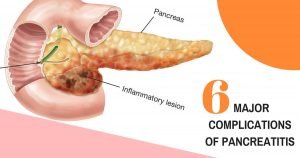
If the pancreas is not treated in time, it can lead to several complications:
- Pseudocysts are sacs that form as a result of fluid and debris collected, and in the event of a rupture, they can lead to internal bleeding in the organs and infection.
- Lung function is impaired and will lead to respiratory problems.
- Diabetes is a severe complication caused by a decrease in insulin levels due to pancreatitis inflammation.
- Untreated chronic pancreatitis can lead to pancreatic cancer.
- Low absorption of nutrients can lead to abnormal weight loss and malnutrition.
- Because pancreatitis is associated with diarrhea, vomiting, and even internal bleeding, hypovolemia can occur and is potentially fatal.
When should I see a doctor?

Swollen pancreatitis is associated with abdominal pain, nausea, vomiting, respiratory problems, and digestive problems. These symptoms are not specific to pancreatitis and may be confused with other conditions. To diagnose the disease quickly and in time and prevent the complications caused by this disease, it is better to see a doctor immediately and as soon as possible.
Other points
- Reducing stress plays a vital role in reducing this pain.
- Drink aloe vera juice daily because aloe vera juice has anti-inflammatory compounds.
- Papaya juice is also rich in nutrients that help treat the disease.





